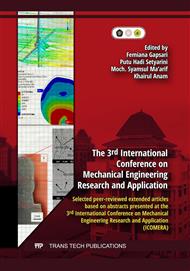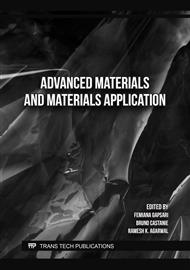p.11
p.21
p.27
p.35
p.43
p.53
p.59
p.65
p.81
The Effect of Friction Stir Weld (FSW) Process Parameters on Tensile Strength, Macro Structure, and Hardness in Results of AA7075 Butt Joints
Abstract:
Friction Stir Welding (FSW) is an innovative technique that enhances the conventional method of joining metals. Notably ecofriendly due to its energy efficiency, FSW involves minimal energy input, reduces pollution, and saves time and costs. It finds applications in diverse sectors such as automotive, aerospace, and industry. Each material requires specific process parameters, which leads to this study focusing on identifying suitable parameters for AA7075 aluminum with a 6mm thickness. Using a tool featuring a tapered cylindrical thread pin and a flat shoulder, the study aims to investigate the influence of FSW process parameters, rotation speed, and traverse speed on the mechanical strength of butt joint connections. The study's experimental design varies these parameters and evaluates the joints through tensile strength testing, hardness testing, and macrostructural analysis. Utilizing Response Surface Methodology (RSM), the data highlights the impact of rotation and traverse speed on tensile strength. Hardness test results present variations within heat zones, analyzing the effects of the mentioned variables. The findings demonstrate minimal flash and successful surface outcomes but also identify wormholes within the stir zone (SZ). Tensile strength testing reveals a definite correlation between RPM and traverse speed with joint strength. In contrast, hardness testing indicates that these parameters do not significantly affect joint hardness. Macrostructure examination suggests RPM and traverse speed have negligible effects on the heat-affected zone. In conclusion, FSW presents a sustainable and effective welding approach with implications for multiple industries, and this research provides insights into optimizing its parameters for specific aluminum materials.
Info:
Periodical:
Pages:
43-50
Citation:
Online since:
May 2024
Price:
Сopyright:
© 2024 Trans Tech Publications Ltd. All Rights Reserved
Share:
Citation:



